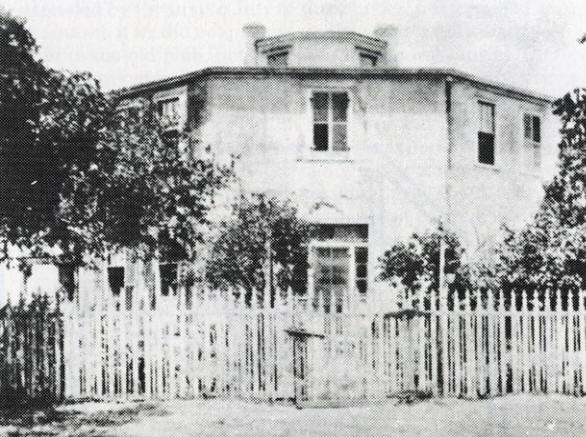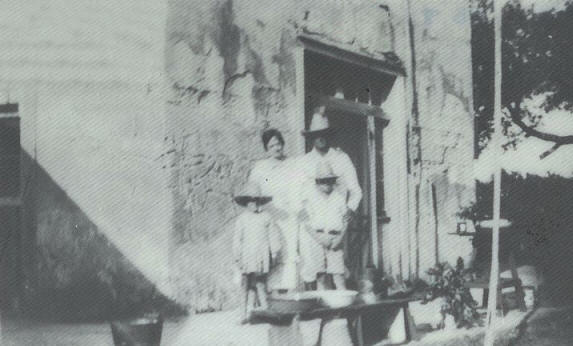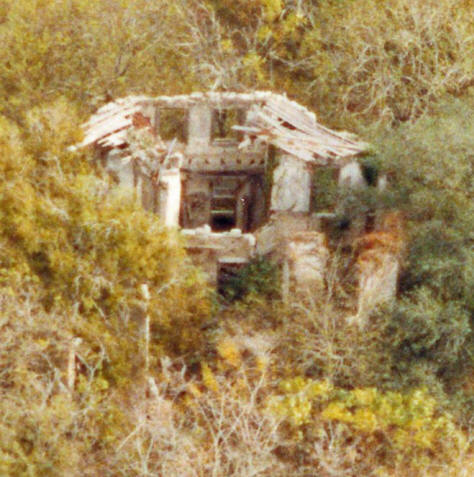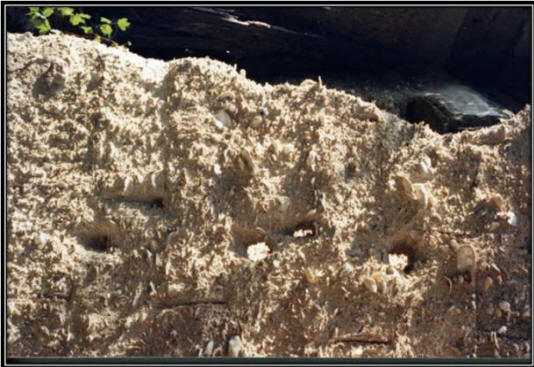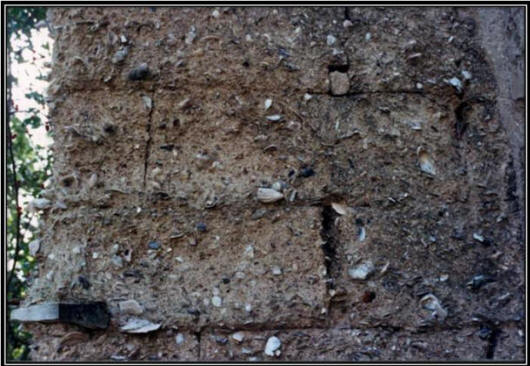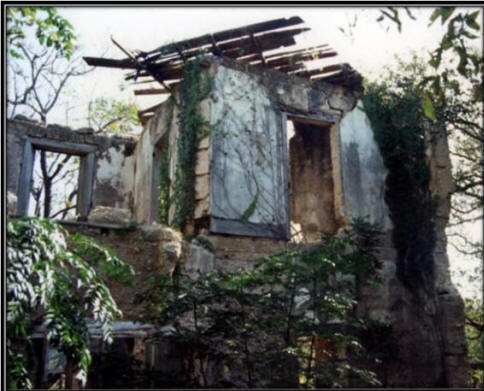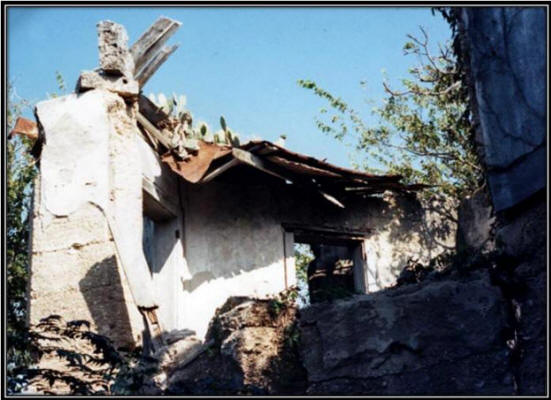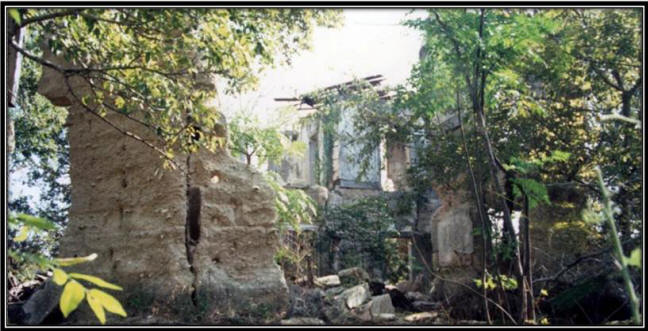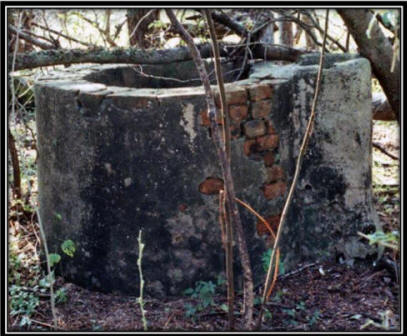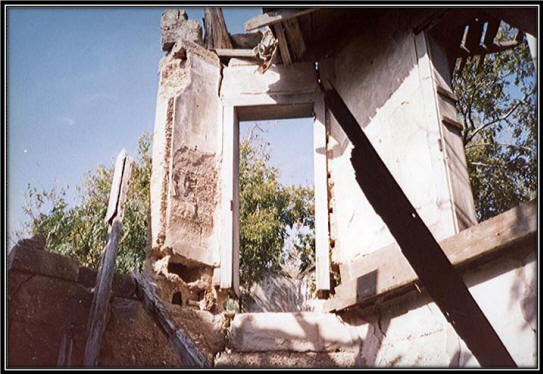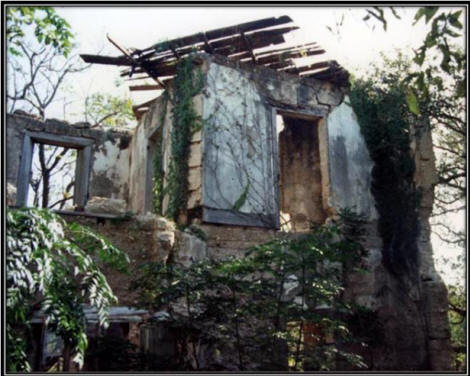|
||
|
From the Biblical passage, I Kings 9:17-18, "and Solomon built..., and Tadmor in the wilderness, in the land..." came the name for the stately Robbins home situated across the Colorado River and 2 miles west of Matagorda. Fredrick W. Robbins and his father Samuel Allen Robbins came to Matagorda County, from Petersburg, Virginia, in 1838, and settled near Caney. In August, 1846, Fredrick W. received a grant of 320 acres of land west of the Colorado River from the state of Texas. He settled there and raised sheep, goats, and cattle and maintained beehives and an orchard. His father, Samuel, owned a schooner (of which he was captain) and engaged in trade and commerce along the Gulf Coast. An anguished letter dated July 2, 1848, from Fredrick to his brother, Chester, in Petersburg, described the tragic death of their father who had traveled alone in his boat to market produce in Corpus Christi. Upon the return trip he was murdered and robbed of eighty dollars in silver seen in his possession. His boat washed ashore and a Captain Chain at Port Aransas had spotted the body just as it was about to wash out to sea. Samuel's remains were brought back to the ranch and buried there. The identity of his murderer was never discovered. After his father's death, Fredrick W. persuaded his brother, Chester Hamlin, to come to Texas to join him in 1852. After Chester came to Texas, the two brothers imported lumber and built a comfortable frame home on Fredrick W.'s Colorado River land west of Matagorda. In 1854 Chester went to Rocky Hill, Connecticut, the ancestral home of the Robbins family in America, and married his distant cousin, Chloe Maria Theresa Robbins. They returned to Texas to find that a devastating hurricane had destroyed the home that Chester and Fredrick W. had built. Fredrick W. and slaves had salvaged lumber after the storm and built a two-room house which served as their temporary home while the beautiful three-story octagon-shaped house that was to become known as "Tadmor" was completed. The architectural design of the octagon-shaped house in America was sparked by Orson Squire Fowler, who in 1848, opened new vistas in architectural design by writing a book setting forth the advantages of living in an octagon-shaped house. He titled it A Home For All, or a New, Cheap, Convenient and Superior Mode of Building. Fowler constructed a huge four-story, eight-sided mansion at Fishkill, New York, incorporating his ideas and the method of an innovative builder, Joseph Goodrich, who constructed a house from water, lime, gravel, and sand that hardened like rock and consequently was fireproof and ratproof. in 1853 a revised edition of his book was published with the updated title, A Home for All, or the Gravel Wall and Octagon Mode of Building. This book was possibly the inspiration guidebook for the construction of "Tadmor"--the "House in the Wilderness." Shell was boated up the river from Dog Island in nearby Matagorda Bay and burned to make lime which was mixed with water, sand and oyster shell to form the concrete for the construction of the three-storied, eight-faceted house which measured sixty feet from outside to outside. The outside walls were 18 inches thick and the inside walls about 12 inches. An upstairs gallery supported by concrete pillars surrounded the house making it resemble a castle or fort. There were four large rooms separated by four small triangular rooms on each floor and a cupola or observation tower on the third floor. There was also a basement, though it was seldom used because of water seepage. A circular stairway was situated at the center of the house. The kitchen and pantry were in a separate wooden building which was attached to the northwest side of the main house by a hallway similar to present-day breezeways. The hallway was the site of the "safe" where food was stored to keep it cool. Because of its north-south exposure and the thick cement floor, the hallway was always cool. In the winter months large wooden doors on the north side were close to shut out the cold winds. The house was not quite finished during the Civil War, and was mistaken by Union troops for a fort; they fired on it with cannon from a gunboat operating in Matagorda Bay south of the house. Eva Robbins Savage has in her possession one of the cannonballs that landed in the yard of "Tadmor." Entries in Charlotte Grimes's diary dated February 26, 1870, and March 4, 1870, captioned "Tadmor," tell of her sadness at the destruction that the war in her 10 years absence have brought to her beloved homeland. In her first entry she states, "tonight I sleep for the first time in 10 years on the Colorado-- I strike still the same note, 'tis so changed, great destruction and ruin are less apparent here than elsewhere." The second entry states, "this almost a week since I came down and I find being so much less change here and I fall so readily into the quiet old ways that I seem hardly to have been away. The 10 years since last I enjoyed the hospitality of 'Solomon's Temple' seem to have passed to the feverish dream. I am my old self again if I but shut my eyes for a moment." Thus it would seem that "Tadmor" would continue for ever with its stately beauty and generous hospitality. Fredrick W.'s wife, Mary, died in 1871, at the birth of their second child, Fredrick McCully; Fredrick W. died in 1873, when Fredrick McCully was two years old. Chester had died in 1871, leaving Chloe with six children. In 1873, after the death of Fredrick W., Chloe and Fredrick W.'s brother Frank were left at "Tadmor" with the children. Chloe's son, Fred S., was 18 by this time and assumed some of the responsibility of the ranch. After Fredrick McCully, or "Freddy McC." as he had become known, had completed his early schooling by tutors at the ranch, he was sent East to attend college in Virginia. After his college days he returned to "Tadmor" and married Eva Eugenia Parker. He even set up housekeeping at "Tadmor." As in the past "Tadmor" continued to be the home for two families: Freddy McC. and Eva and their family, and "Grandma" Chloe and Uncle Frank. By the early 1900s, Freddy McC. and Eva were the parents of four children. Grandma Chloe's family was grown and she spent most of her time in her upstairs, South bedroom engaged in her beautiful hand sewing, making quilts, and crocheting. Uncle Frank occupied a downstairs room. About this time Fredrick McCully remodeled the stately old home. It was completely re-papered with dark blue and dark wine velvet embossed paper, a carbide gas plant to generate gas for lighting was installed, and lights were placed throughout. A wide cement porch or "walk" was poured around the entire house. Freddy McC. bought a piano for the children, ordered school books from Alston through the county school superintendent, and hired a tutor to teach the children. Once again "Tadmor" was the setting for sumptuous meals, overnight guests, live-in teachers, laughing children, of bountiful harvest of fruits, fresh beef, eggs, chickens, and fish, and groceries bought by Freddy McC. at Henke and Pillot's in Houston on his twice-yearly train trip to the city. Eva Robbins Savage, who was still living in 1984 at age 86, recalled those happy days. She grew up in "Tadmor" and shared in the bountiful living. She owns the Fredrick W. Robbins tract of land on which "Tadmor" is situated, as well as land that was added to the range by her grandfather, Fredrick W., and her father, Fredrick McCully. Her daughter, Barbara Stell, also spent many nights at "Tadmor" sleeping in the upstairs, East bedroom, half scared by the howling of the coyotes, and the hooting of the owls in the huge moss-draped liveoak trees. In 1938 Freddy McC. built his wife, Eva, the new home he had promised her about a quarter-mile north of the old house, and after almost a century "Tadmor" was left vacant. For as long as he lived at the ranch, however, Freddy McC. would visit the house daily. Because of its bulk, much of the old furniture was left behind and new furniture was bought for the new house. Following Freddy McC.'s death, vandals soon stripped "Tadmor" of its fine furniture, antiques, and relics of the good life for the past-- in addition to much of the furniture of the new house. Today only fragments of the outside wall of beautiful old "Tadmor" are standing; the stately old Live Oak surrounding it seemed we had its demise.
Historic Matagorda County, Volume 1, pages
117-118, 1986 |
||
|
||
|
Twas a small but jolly bunch that left the wharf Friday afternoon in the Merry Widow with Capt. Allen Trahan in charge. The party was bound for the Robbins home up the river. Their destination was reached in time to take all kinds of kodak pictures and all kinds of posing was done with hogs, peacocks, chickens and even goats. The whole place was taken in even to the safe where lots of good things to eat were found, especially did the one young man of the crowd find something interesting. Those thanking Mr. and Mrs. Robbins for a most enjoyable afternoon and who came home wearing peacock feathers as souvenirs of the occasion were Misses Zuber, Rugeley, Coffin, Inglehart and Gilbert, and Messrs. Julian Inglehart and Allen Trahan. Matagorda News, April 4, 1913
|
||
|
||
|
||
|
||
|
||
|
||
 |
